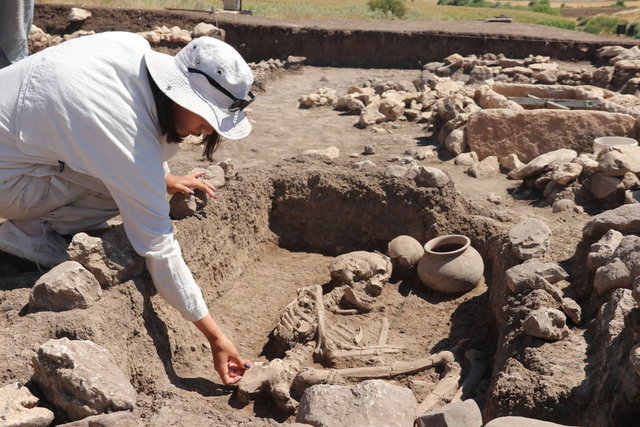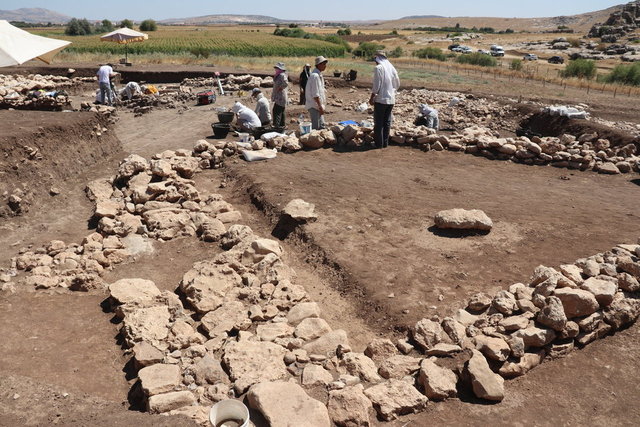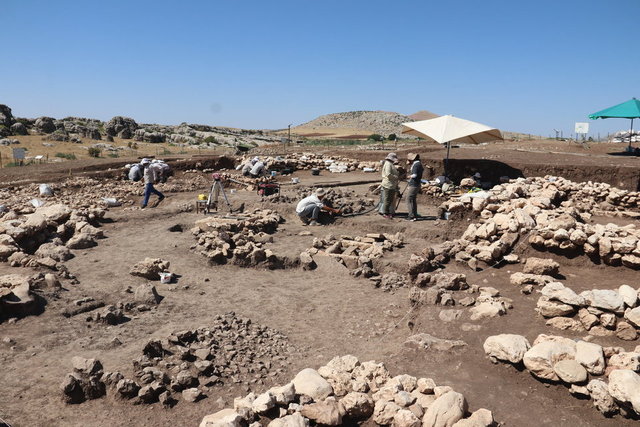
Pot-type tombs containing the remains of children were found in Çayönü Höyük, one of the places where agriculture first started
In the ongoing archaeological excavations at Çayönü Höyük in the Ergani district of Diyarbakır, pot-type graves containing the remains of children and infants aged 6 and under have been found.
Çayönü Höyük is considered one of the areas where agriculture was first practiced, dating back to the Neolithic period. The first settlement is thought to have occurred around 9500-7500 BC.
Archaeologists have unearthed 10 cist-type graves during the excavations that have been going on for 3 years. While no grave gifts were found in the simple earthen tombs, the presence of offerings in the pottery tombs draws attention.
The excavations are being carried out under the leadership of Prof. Dr. Aslı Erim Özdoğan, the Head of the Department of Archaeology at Çanakkale Onsekiz Mart University.

Prof. Dr. Özdoğan, who states that Çayönü Höyük is one of the places where agriculture first began and played an important role in the development of animal husbandry, mentioned in her statement that they have identified various phases of pottery, ceramics, and the Neolithic settlement in the eastern part of the mound. She also noted that the excavations in this area are still ongoing.
Özdoğan noted that the burial area in the mound has spread over a larger area than previously estimated. “In this year’s excavations, we have uncovered 5 cist-type graves. A total of 10 chest burials have been revealed since 2021. These burials reflect the traditions of that period. What caught our attention in the burial site is that in all of them, a vessel or bowl has been left as a gift. There are no offerings in the simple earthen graves,” she said.

“There are those that are deeper and more enclosed, which belong to the cist-type graves style. The pottery-free Neolithic has its own distinct structure and an older settlement surrounding it. Currently, we are trying to uncover its relationship. We have pot graves. Following those, we have graves either surrounded by stones or constructed next to stone blocks. Typically, children around 6 years old and infants are buried within small pottery vessels of various sizes. These pottery vessels were used as coffins.”
Özdoğan concluded her statements as follows:
“Individuals with higher status in the community were buried in more specially crafted cist-type graves, while children under the age of 6, infants, and newborns were placed on their sides inside pottery vessels of various sizes used for everyday purposes. Usually, 3 vessels are placed alongside them as gifts.
Adults are laid to rest in cist-type graves in a semi-folded position, often accompanied by 2 or 3 vessels placed beside them. We believe that these vessels likely contained food.”
You may also like
- A 1700-year-old statue of Pan unearthed during the excavations at Polyeuktos in İstanbul
- The granary was found in the ancient city of Sebaste, founded by the first Roman emperor Augustus
- Donalar Kale Kapı Rock Tomb or Donalar Rock Tomb
- Theater emerges as works continue in ancient city of Perinthos
- Urartian King Argishti’s bronze shield revealed the name of an unknown country
- The religious center of Lycia, the ancient city of Letoon
- Who were the Luwians?
- A new study brings a fresh perspective on the Anatolian origin of the Indo-European languages
- Perhaps the oldest thermal treatment center in the world, which has been in continuous use for 2000 years -Basilica Therma Roman Bath or King’s Daughter-
- The largest synagogue of the ancient world, located in the ancient city of Sardis, is being restored











Leave a Reply